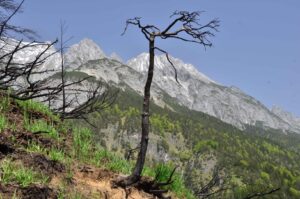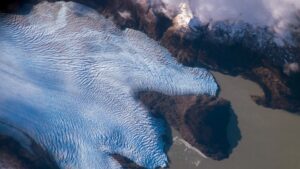Research on the edge: Vertical Ice
Details
Full Title
What can we learn from vertical ice features on glaciers?
Suggested by
Marie Schroeder
The respective workshop calls for contributions regarding ...
- vertical ice cliffs on land, debris covered glaciers and any steep ice features
- observations or modelling approaches for vertical ice
- changes of vertical ice in a changing climate
Keywords
Vertical Ice, Glaciers, Mass Balance, Field Work, Modelling
Type
Sessions
Description
Steep ice on land can be found in different environments in the form of land-terminating ice cliffs, ice cliffs on debris-covered glaciers or the front of surging glaciers. Vertical ice surfaces experience unique environmental conditions compared to flat glacier areas, including differential exposure to solar radiation, atmospheric conditions, and ice-atmosphere interactions. Understanding the processes driving accumulation and ablation on these steep ice surfaces is critical for accurately predicting their mass balance and understanding their behaviour. Although vertical or steep ice features typically make up only a small percentage of a glacier’s surface area, they can significantly contribute to its mass loss and the changes it undergoes. At times, these features behave counterintuitively, as seen in northern Greenland, where vertical ice cliffs at the edge of an ice cap periodically advance despite the overall mass loss of the ice cap. This session welcomes all aspects of research related to vertical ice, including field observations, experimental methods, and modelling approaches.
Format/Concept
This session aims to create a collaborative platform for PhD students focused on the unique challenges and dynamics of vertical or steep ice environments. It’s a pretty niche topic, so the chance to connect and exchange ideas will be incredibly valuable!
The session will feature a series of presentations from participants, sharing their work on steep ice, whether it’s about field experiments, modeling, methods, or key results. After that, we’ll have a group discussion to dive deeper into the challenges, insights, and opportunities in this area.
If you’re working on vertical or steep ice, we’d love for you to join us, share your work, and help grow this unique community!

